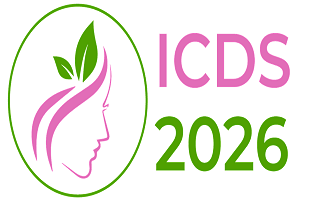3rd International Conference on
Dermatology & Skincare
April 16-17, 2026 | Chicago, USA

Address: 9300 Bryn Mawr Avenue, Rosemont, IL 60018, United States
ICDS 2026

Stony Brook, USA
Abstract:
Introduction and Aim: Hidradenitis Suppurativa (HS) is a chronic inflammatory skin condition associated with significant morbidity, impacting individuals across diverse demographic groups. This retrospective study aims to assess the trends in HS incidence over a 10-year period from 2013 to 2023, with a focus on variations by sex, race, and age group to identify potential disparities. Analyzing these trends can help inform targeted interventions and optimize healthcare resource allocation for populations most affected by HS.
Methods: Data covering individuals aged 0-84 from 2013 to 2023 were analyzed retrospectively. Incidence rates were calculated annually for the overall population and stratified by sex (male and female), race (Caucasian, African America, Asian), and age groups (from 0-4 to 80-84 years). Year-to-year comparisons were conducted to track shifts in incidence rates across demographic groups, enabling the identification of specific trends and disparities.
Results: The overall incidence of HS demonstrated an upward trend, increasing from 0.044% in 2013 to 0.109% in 2023. Black individuals consistently showed higher incidence rates than other racial groups, peaking at 0.25% in 2023. Females exhibited a higher incidence rate than males, with rates rising from 0.02% in 2013 to 0.15% in 2023. Age-specific data revealed that the 10-14 and 15-24 age groups experienced the most pronounced increases, particularly the 10-14 group, which showed a substantial rise from 0.043% in 2013 to 1.613% in 2023. Notably, the period from 2020 to 2021 marked a significant annual increase in incidence, where rates rose from 0.083% to 0.107%, with age groups 10-14 and 20-24 showing marked increases during this period.
Conclusions: This study reveals a rising incidence of HS over the past decade, with distinct disparities across race, sex, and age. Black individuals and females are disproportionately affected, and younger age groups, particularly those between 10 and 24 years, show rapidly increasing incidence rates. These findings underscore the need for targeted public health initiatives focused on early detection and intervention, particularly among high-risk age groups and demographic populations, to mitigate healthcare inequities and improve patient outcomes for those affected by HS.
Biography:
Dr. Rehman Basharat graduated from Stony Brook University with a degree in biology. He is passionate about dermatology and deeply committed to advancing skin health through both innovative research and compassionate patient care.
